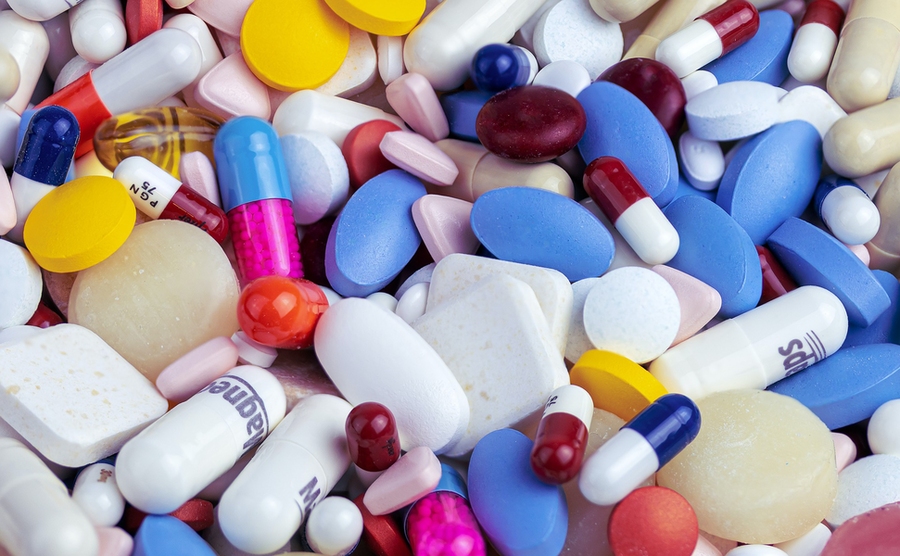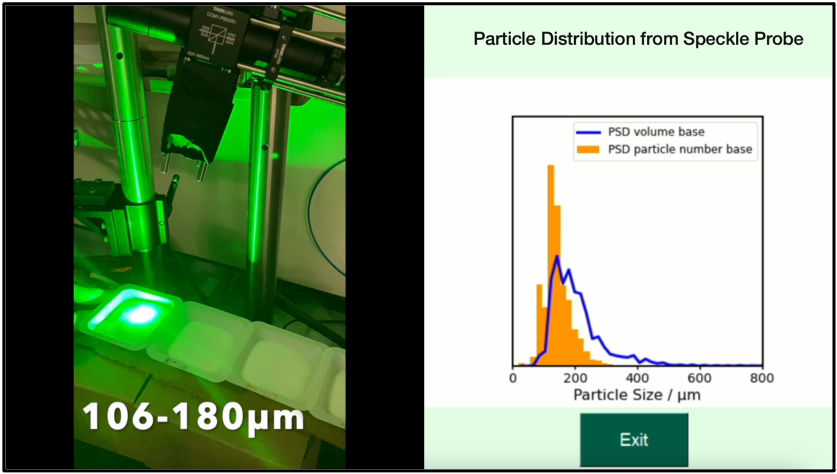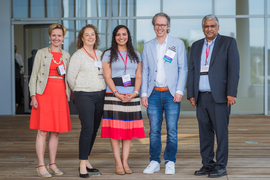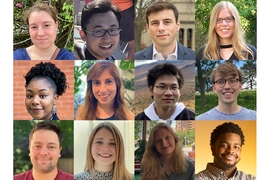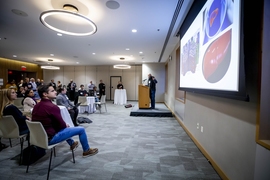When medical companies manufacture the pills and tablets that treat any number of illnesses, aches, and pains, they need to isolate the active pharmaceutical ingredient from a suspension and dry it. The process requires a human operator to monitor an industrial dryer, agitate the material, and watch for the compound to take on the right qualities for compressing into medicine. The job depends heavily on the operator’s observations.
Methods for making that process less subjective and a lot more efficient are the subject of a recent Nature Communications paper authored by researchers at MIT and Takeda. The paper’s authors devise a way to use physics and machine learning to categorize the rough surfaces that characterize particles in a mixture. The technique, which uses a physics-enhanced autocorrelation-based estimator (PEACE), could change pharmaceutical manufacturing processes for pills and powders, increasing efficiency and accuracy and resulting in fewer failed batches of pharmaceutical products.
“Failed batches or failed steps in the pharmaceutical process are very serious,” says Allan Myerson, a professor of practice in the MIT Department of Chemical Engineering and one of the study’s authors. “Anything that improves the reliability of the pharmaceutical manufacturing, reduces time, and improves compliance is a big deal.”
The team’s work is part of an ongoing collaboration between Takeda and MIT, launched in 2020. The MIT-Takeda Program aims to leverage the experience of both MIT and Takeda to solve problems at the intersection of medicine, artificial intelligence, and health care.
In pharmaceutical manufacturing, determining whether a compound is adequately mixed and dried ordinarily requires stopping an industrial-sized dryer and taking samples off the manufacturing line for testing. Researchers at Takeda thought artificial intelligence could improve the task and reduce stoppages that slow down production. Originally the research team planned to use videos to train a computer model to replace a human operator. But determining which videos to use to train the model still proved too subjective. Instead, the MIT-Takeda team decided to illuminate particles with a laser during filtration and drying, and measure particle size distribution using physics and machine learning.
“We just shine a laser beam on top of this drying surface and observe,” says Qihang Zhang, a doctoral student in MIT’s Department of Electrical Engineering and Computer Science and the study’s first author.
A physics-derived equation describes the interaction between the laser and the mixture, while machine learning characterizes the particle sizes. The process doesn’t require stopping and starting the process, which means the entire job is more secure and more efficient than standard operating procedure, according to George Barbastathis, professor of mechanical engineering at MIT and corresponding author of the study.
The machine learning algorithm also does not require many datasets to learn its job, because the physics allows for speedy training of the neural network.
“We utilize the physics to compensate for the lack of training data, so that we can train the neural network in an efficient way,” says Zhang. “Only a tiny amount of experimental data is enough to get a good result.”
Today, the only inline processes used for particle measurements in the pharmaceutical industry are for slurry products, where crystals float in a liquid. There is no method for measuring particles within a powder during mixing. Powders can be made from slurries, but when a liquid is filtered and dried its composition changes, requiring new measurements. In addition to making the process quicker and more efficient, using the PEACE mechanism makes the job safer because it requires less handling of potentially highly potent materials, the authors say.
The ramifications for pharmaceutical manufacturing could be significant, allowing drug production to be more efficient, sustainable, and cost-effective, by reducing the number of experiments companies need to conduct when making products. Monitoring the characteristics of a drying mixture is an issue the industry has long struggled with, according to Charles Papageorgiou, the director of Takeda’s Process Chemistry Development group and one of the study’s authors.
“It is a problem that a lot of people are trying to solve, and there isn’t a good sensor out there,” says Papageorgiou. “This is a pretty big step change, I think, with respect to being able to monitor, in real time, particle size distribution.”
Papageorgiou said that the mechanism could have applications in other industrial pharmaceutical operations. At some point, the laser technology may be able to train video imaging, allowing manufacturers to use a camera for analysis rather than laser measurements. The company is now working to assess the tool on different compounds in its lab.
The results come directly from collaboration between Takeda and three MIT departments: Mechanical Engineering, Chemical Engineering, and Electrical Engineering and Computer Science. Over the last three years, researchers at MIT and Takeda have worked together on 19 projects focused on applying machine learning and artificial intelligence to problems in the health-care and medical industry as part of the MIT-Takeda Program.
Often, it can take years for academic research to translate to industrial processes. But researchers are hopeful that direct collaboration could shorten that timeline. Takeda is a walking distance away from MIT’s campus, which allowed researchers to set up tests in the company’s lab, and real-time feedback from Takeda helped MIT researchers structure their research based on the company’s equipment and operations.
Combining the expertise and mission of both entities helps researchers ensure their experimental results will have real-world implications. The team has already filed for two patents and has plans to file for a third.
